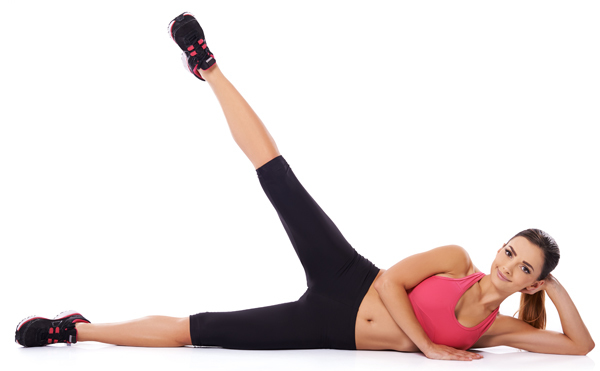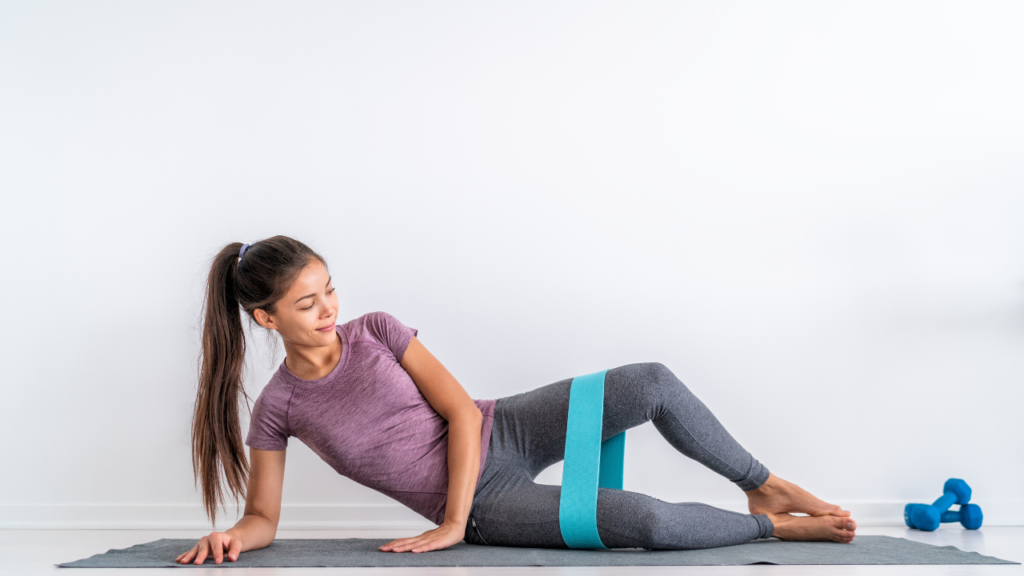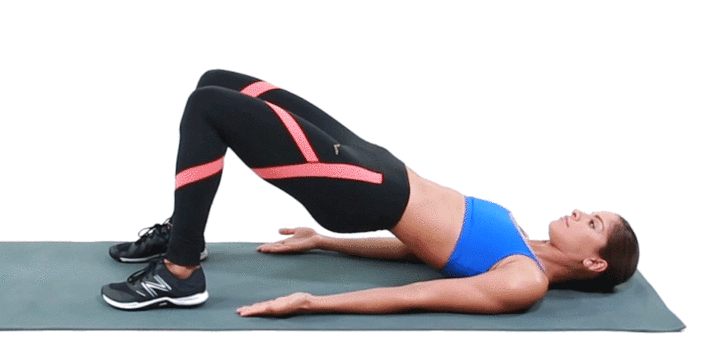How to Get Rid of Hip Dips: Unveiling the Secrets to a Curvier Figure

Hip dips, also known as violin hips or high hips, refer to the inward curve or dip between the hip bone and the upper thigh. Many individuals are self-conscious about hip dips and seek ways to reduce their appearance. While it’s important to remember that hip dips are a natural characteristic and not a flaw, this article aims to provide you with techniques to help minimize their visibility. By focusing on diet, exercises, and overall body toning, you can achieve a more curvaceous figure that enhances your confidence and self-esteem.
Understanding Hip Dips
Hip dips are caused by the shape of your pelvis and the distribution of your subcutaneous fat and muscle tissue. The depth and visibility of hip dips can vary from person to person. They are more noticeable in individuals with higher hip bones and less body fat in the hip area.
Factors Contributing to Hip Dips
Several factors contribute to the prominence of hip dips:
- Bone Structure: The shape and structure of your pelvis play a significant role in the appearance of hip dips. The position of your hip bones, particularly the prominence of your trochanters (the bony protrusions on the sides of your upper thighs), can create the indentation commonly associated with hip dips. This bone structure variation is entirely natural and differs from person to person.
- Genetics: Genetic factors contribute to the distribution of fat and the development of muscles in your body. Some individuals may have a genetic predisposition to store more subcutaneous fat in the hip area or have less muscle volume around the hips, which can make hip dips more noticeable. These genetic factors influence the overall shape and contour of your body.
- Muscle Tone: The tone and strength of your muscles can affect the appearance of hip dips. Weak or underdeveloped muscles around the hip area can contribute to a more pronounced dip. Building and toning the muscles in the hips, particularly the gluteus medius and gluteus minimus, can help minimize the visibility of hip dips.
- Subcutaneous Fat Distribution: The amount and distribution of subcutaneous fat, which is the fat located just beneath the skin, can impact the visibility of hip dips. Individuals with a lower percentage of body fat may have less fat filling in the hip area, making the dips more noticeable. Conversely, those with a higher percentage of body fat may have more fat distributed around the hips, which can potentially reduce the visibility of hip dips.
Diet and Nutrition for Hip Dip Reduction
Maintaining a healthy and balanced diet is crucial for reducing hip dips. Here are some dietary tips:
- Consume a Calorie-Controlled Diet: To reduce overall body fat, it’s important to create a calorie deficit. This means consuming fewer calories than you burn. Aim to find a balance that allows for gradual, sustainable weight loss. Consult with a healthcare professional or registered dietitian to determine your calorie needs and develop a personalized plan.
- Focus on Whole Foods: Opt for nutrient-dense whole foods that provide essential vitamins, minerals, and fiber. Include a variety of fruits, vegetables, lean proteins, and whole grains in your meals. These foods are not only beneficial for overall health but can also support a balanced body composition.
- Choose Lean Proteins: Incorporate lean protein sources such as chicken, turkey, fish, tofu, legumes, and low-fat dairy products into your diet. Protein plays a crucial role in muscle development and repair, which can contribute to toning and shaping the muscles around the hip area.
- Include Healthy Fats: Don’t be afraid of fats! Include sources of healthy fats in your diet, such as avocados, nuts, seeds, and olive oil. Healthy fats provide satiety, support hormone production, and aid in nutrient absorption. They can help you feel satisfied and maintain a balanced diet.
- Stay Hydrated: Water is essential for overall health and plays a role in promoting optimal body composition. Aim to drink an adequate amount of water throughout the day to stay hydrated. Hydration can help support metabolism, digestion, and overall bodily functions.
- Moderate Your Intake of Processed Foods: Processed foods often contain added sugars, unhealthy fats, and empty calories. Limit your consumption of sugary snacks, sodas, fast food, and highly processed snacks. Instead, opt for whole, unprocessed options whenever possible.
Targeted Exercises for Hip Dips
When it comes to reducing the appearance of hip dips, incorporating specific exercises into your routine can make a significant difference. Here are three targeted exercises that will help strengthen and tone the muscles around your hips, resulting in a smoother silhouette.
- Side Leg Raises:

To perform this exercise, start by lying on your side with your legs extended. Slowly lift your top leg upward while keeping it straight. Focus on engaging the outer hip muscles throughout the movement. Hold for a moment at the top, then lower your leg back down. Repeat this exercise for the desired number of repetitions, then switch to the other side.
Clamshells:

Begin by lying on your side with your knees bent and stacked on top of each other. Keeping your feet together, slowly lift your top knee as far as comfortable while maintaining contact between your feet. Pause for a moment at the top, then lower your knee back down. Make sure to engage your core and avoid rolling your hips backward. Repeat on both sides to effectively target the hip muscles.
Glute Bridges:

Lie on your back with your knees bent and feet flat on the ground, hip-width apart. Place your arms at your sides for stability. Engage your glute muscles and lift your hips off the ground, creating a straight line from your knees to your shoulders. Squeeze your glutes at the top of the movement, then slowly lower your hips back down to the starting position. Perform several repetitions to effectively activate and strengthen your glute muscles.
Strength Training and Resistance Exercises
In addition to targeted hip exercises, incorporating overall strength training and resistance exercises can help improve muscle tone and reduce the prominence of hip dips. Include exercises like squats, lunges, deadlifts, and hip thrusts in your workout routine.
Cardiovascular Exercises
Cardiovascular exercises are essential for burning excess body fat. Engaging in regular aerobic activities like running, swimming, or cycling can contribute to overall fat loss, which can minimize the appearance of hip dips.
Additional Tips for Minimizing Hip Dips
When aiming to minimize the visibility of hip dips, there are additional approaches that can complement targeted exercises. Incorporating these practices into your lifestyle can help enhance your confidence and create a more balanced appearance.
- Wear Supportive Undergarments: Certain undergarments and shapewear are designed to provide temporary support and create a smoother silhouette. They can help minimize the visibility of hip dips when you want to enhance your curves for a special occasion or specific outfit. Opt for styles that offer targeted compression and contouring in the hip area to achieve the desired effect.
- Maintain Good Posture: Good posture plays a crucial role in how your body appears. By standing tall with proper alignment, you can improve your overall body posture, which in turn creates a more flattering silhouette. Practice elongating your spine, keeping your shoulders back and down, and engaging your core muscles. This simple adjustment can make a noticeable difference in your appearance and boost your body confidence.
- Embrace a Body-Positive Mindset: It’s important to remember that hip dips are a natural part of your body and vary among individuals. Instead of viewing them as flaws, embrace them as unique aspects of your physique. Cultivating a body-positive mindset involves recognizing and appreciating your body for its strength, resilience, and inherent beauty. Focus on self-love and acceptance, celebrating your individuality rather than striving for an idealized standard.
Importance of Consistency and Patience
It’s important to note that reducing hip dips requires consistency and patience. Results may vary depending on individual factors, and it may take time to see significant changes. Stay committed to your diet and exercise routine, and celebrate small milestones along the way.
Frequently Asked Questions (FAQs)
- Q: Can I completely get rid of hip dips?
A: While you can’t entirely get rid of hip dips, you can minimize their appearance through targeted exercises and overall body toning. - Q: How long will it take to see results?
A: Results vary from person to person. Consistency in diet, exercise, and overall lifestyle will contribute to the effectiveness and speed of your progress. - Q: Are hip dips a sign of being unhealthy?
A: No, hip dips are a natural characteristic and not an indication of poor health. Everyone’s body is unique and varies in shape and structure. - Q: Can gaining weight help reduce hip dips?
A: Gaining weight might lead to an increase in overall body fat, which can potentially reduce the visibility of hip dips. However, it’s essential to focus on overall health and well-being rather than solely aiming to change your body shape. - Q: Can I solely rely on exercise to reduce hip dips?
A: While exercise plays a significant role, a comprehensive approach that includes a balanced diet, regular exercise, and overall healthy lifestyle habits will yield the best results.
Conclusion
Hip dips are a natural feature of the human body and should be embraced as part of your unique shape. However, if you wish to minimize their appearance, a combination of targeted exercises, overall strength training, cardiovascular activities, and a balanced diet can help you achieve a more curvaceous figure. Remember to stay consistent, be patient with your progress, and prioritize your overall health and well-being. Embrace your body and appreciate its individual beauty.
Find more insightful articles and tips at Dailypathways



